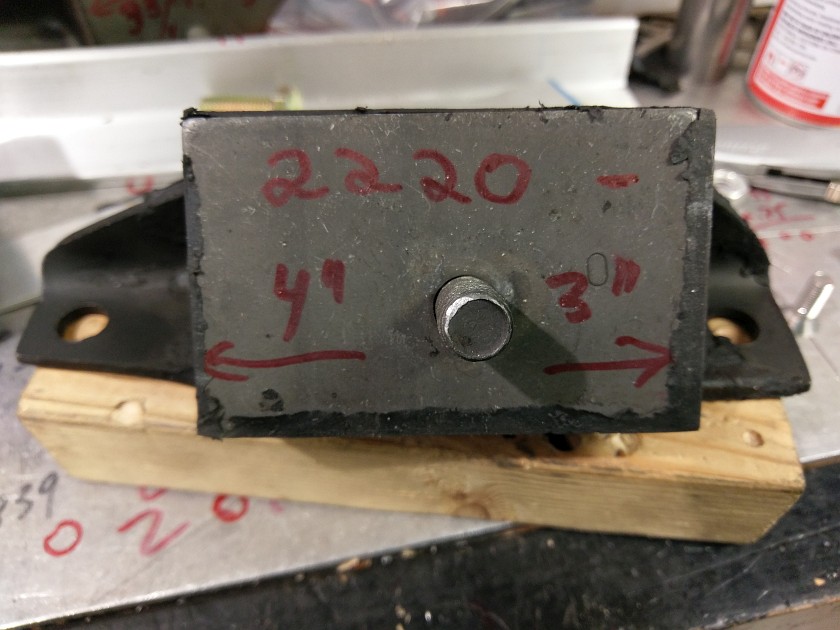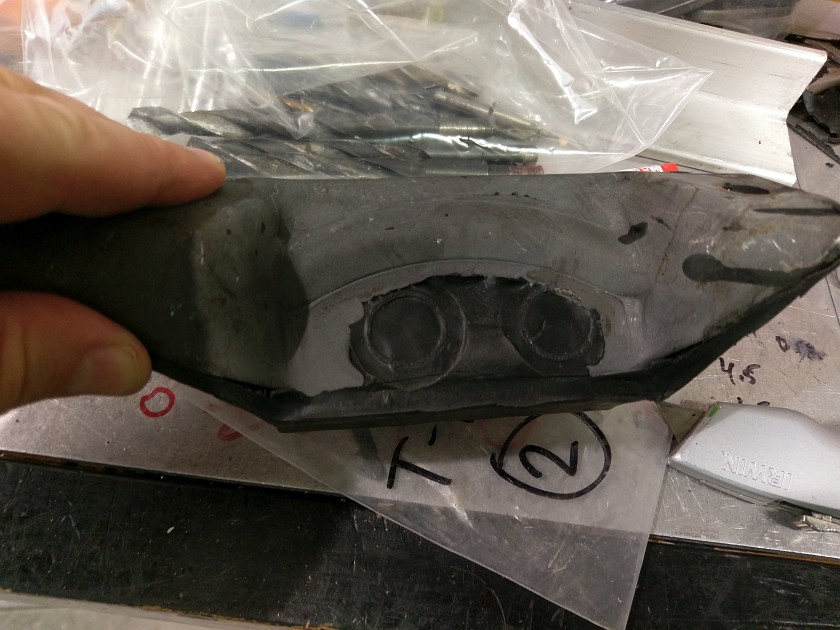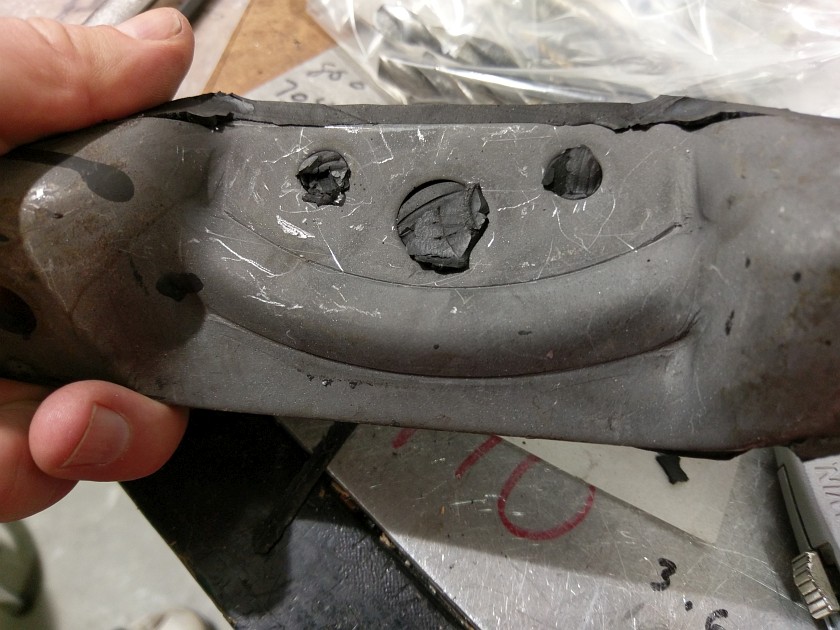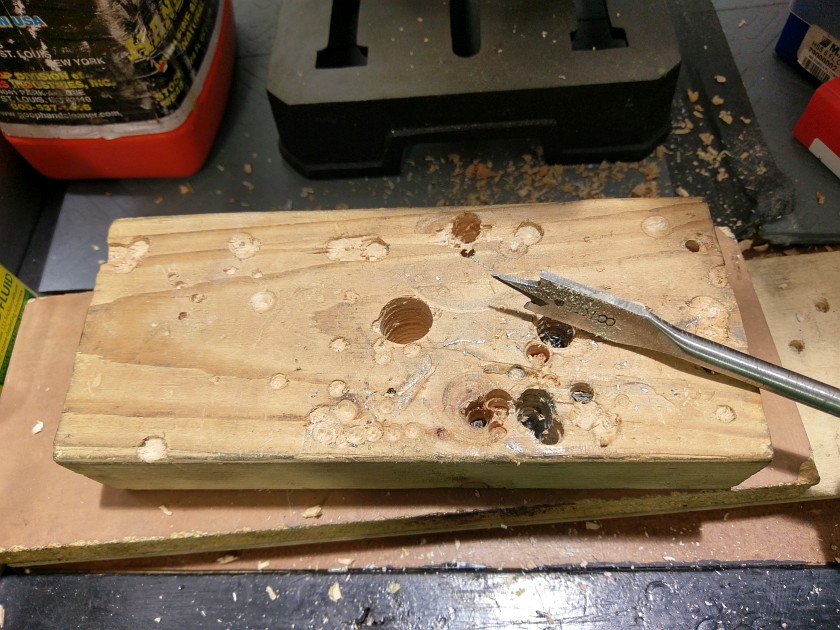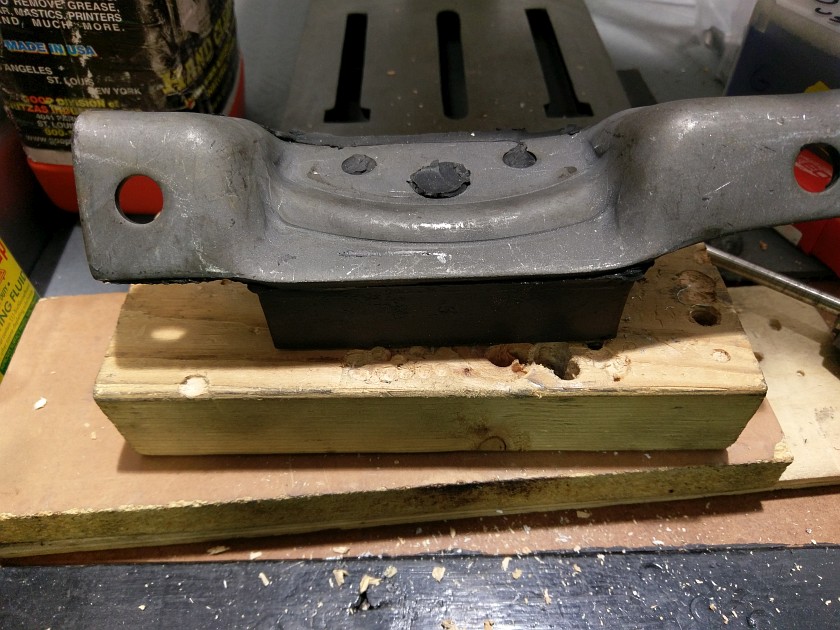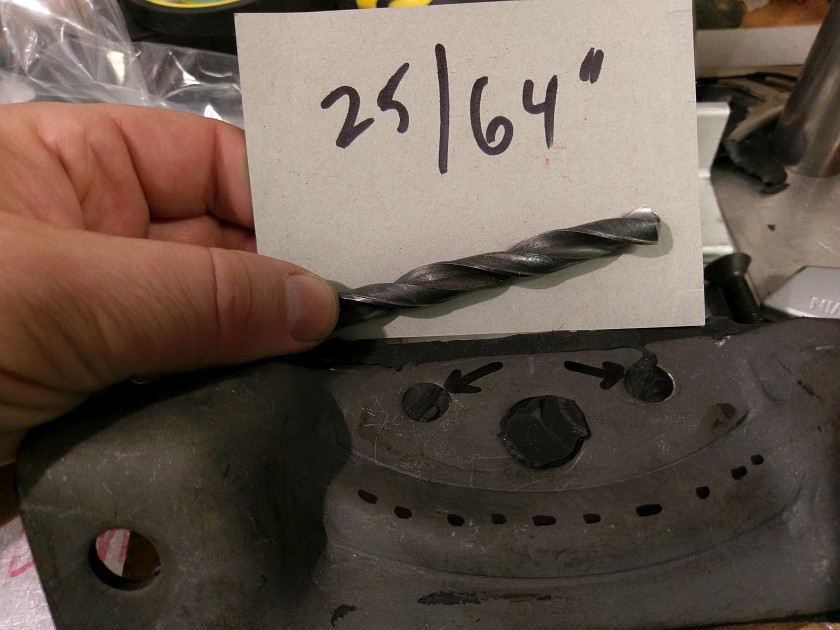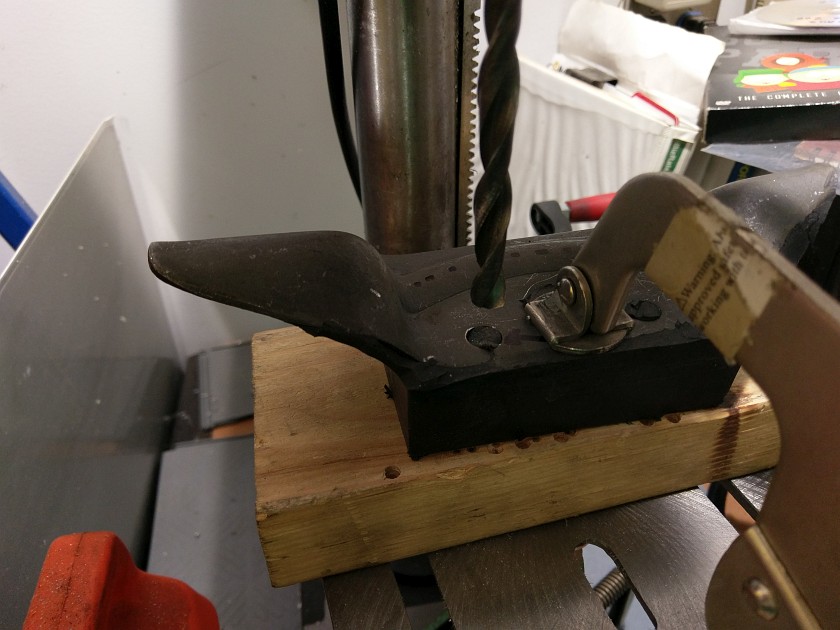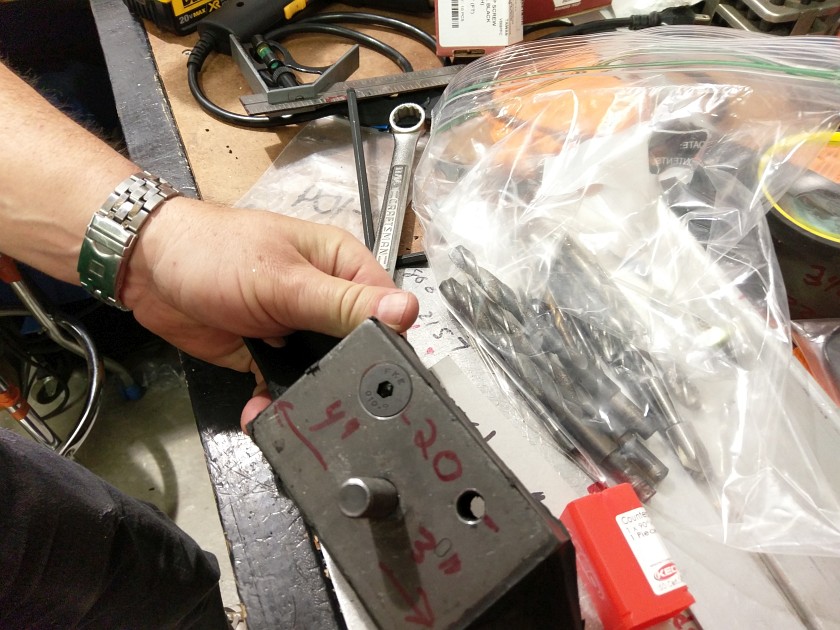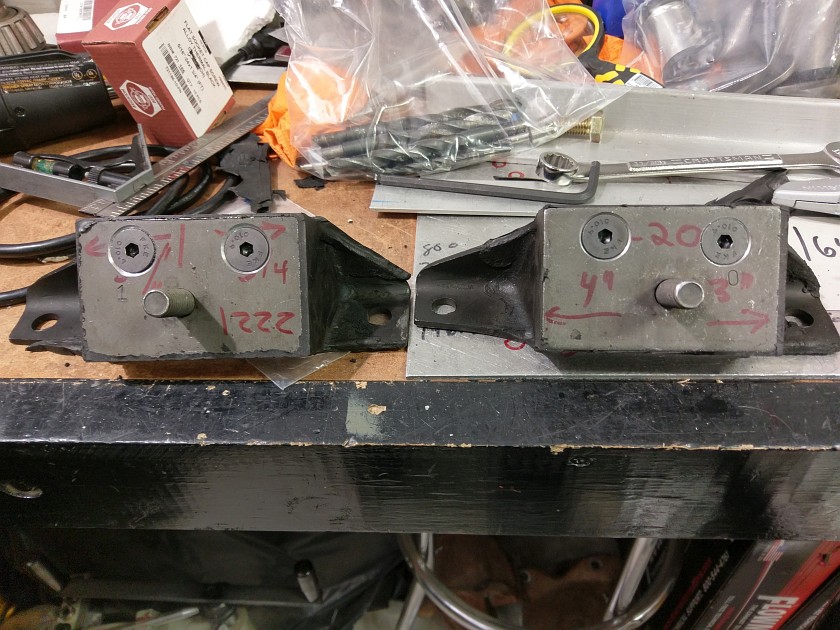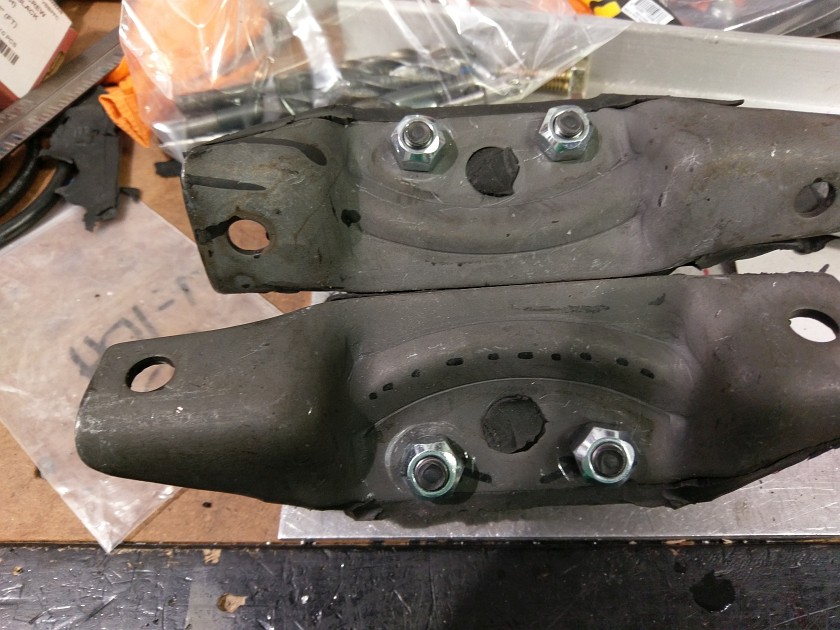Ford Motor Mount Strengthening
If you have to use the stock early Mustang (65-66 possibly other years) motor mounts and can't or don't want to
use the urethane aftermarket mounts. This technique may work on other style mounts with some modifications.
This modification has been done for many years by the Ford folks before Urethane mounts were commonly
available.
The purpose of this modification is to stop to separation of the motor mount under high horsepower application
where the stock type mount will end up splitting or the metal come apart from the rubber.
These mounts were for my Sunbeam Tiger project and unlike the Mustang they only use the isolator part of the
mount so just the parts below. I used Anchor 2220 and Anchor 2221 for the Tiger as the mounts are different on
each side.
Tools and Supplies Needed
25/64" Drill Bit, or close
1" Counter Sink Tool (angle for std is 82 degrees, or metric which is 90 degress)
4 - 10mm flat head bolts 45mm in length (or equivalent length in inch 3/8" size)
4 - Locking Bolts, preferred thread interfering type not Nylock's due to heat of headers
Block of wood
Nothing special really needed, I used 10mm countersink bolts as they have a wider (90 degree)
countersink vs. The 3/8" bolts which have an 82 degree countersink. The 10mm with the 90 degree
seat will have a harder time to pull through
